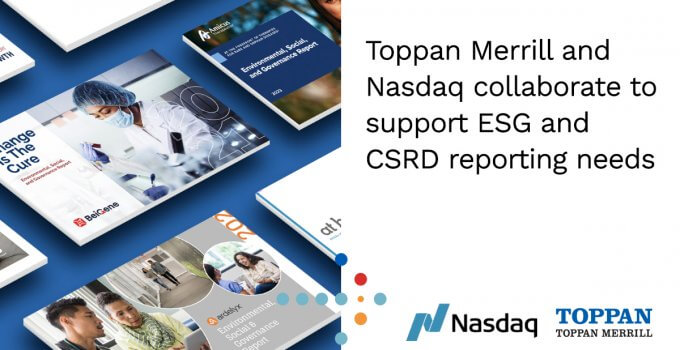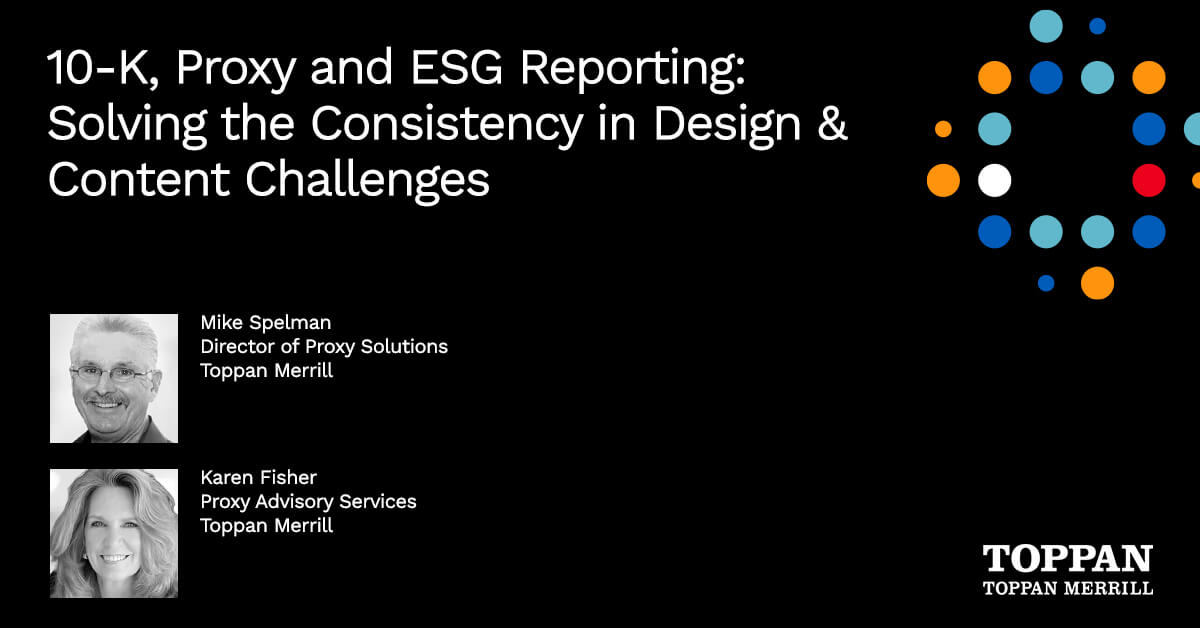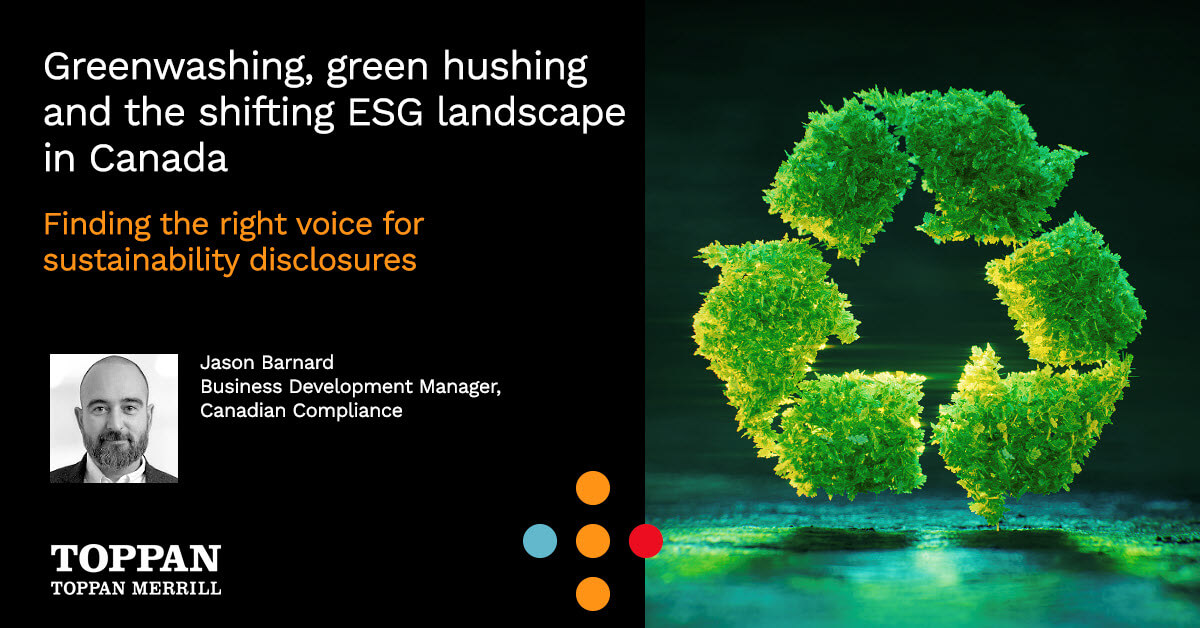The European Sustainability Reporting Standards (ESRS) were published in late December 2023, starting a new phase in the roll-out of the European Union Corporate Sustainability Reporting Directive (CSRD). Companies subject to CSRD now have definitive direction on structuring their ESG reporting to comply with the new directive. However, definitive does not necessarily mean simple, clear or easy to achieve.
As companies begin the work of applying the new CSRD directive for the 2024 financial year, they are recognizing the challenges of adapting conventional financial and legal reporting processes to meet new, and rapidly evolving, requirements. The directive may require much more extensive engagement across the business and input from numerous departments including operations, human resources, logistics, investor relations and other departments.
For this reason, Toppan Merrill and Nasdaq are working together to simplify the complexities of ESG reporting — helping companies meet CSRD and ESG reporting standards and tell a compelling story around the business value and societal impacts of their sustainability successes.
Navigating emerging ESG reporting standards
Over the past five years, ESG has become an essential business strategy component for all companies. When not mandated, ESG reporting remains at the discretion of companies to pick the standards and metrics they choose to report.
A multitude of regulatory bodies and independent research organizations have issued ESG reporting standards. But this proliferation of ESG standards leaves companies parsing the differences, juggling multiple standards or trying to decide which to follow.
There’s a rising chorus of calls from all sides on the need to move sustainability reporting from a nice idea to a more rigorous standard that provides the market with the required information to best utilize these reports. Regulators, investors and the public recognize the need for a consistent framework/standard for ESG reporting in order to hold companies accountable to requirements and expectations. But companies also want standardization, so they can hold themselves accountable to their corporate goals, objectively measure their progress, and “sell” their sustainability success to investors and other stakeholders.
CSRD signals the direction most companies should follow for their ESG reporting
CSRD is far from universal; it only applies to companies doing business in the EU (though that will include over 40,000 companies, once the directive is fully rolled out). Still, CSRD represents some of the first official, well-organized guidance issued by a major regulatory body.
Moreover, along with the newly passed California Climate Acts (SB 253 and SB 261), proposed SEC Climate Related Disclosure rule and the Singapore Exchange use of the Task Force on Climate-related Financial Disclosures (TCFD) in the Asia-Pacific (APAC) region—CSRD sends a clear signal to all companies. It’s time to start putting the processes and protocols in place, along with the necessary tools and technologies, to meet these ESG reporting standards—whether or not they currently fall under existing requirements.
Build or buy? Most issuers will engage external ESG resources.
Most issuers will seek help from external resources to support their reporting needs. ESG reporting still represents a new frontier for many companies.
Establishing an ESG reporting program may require an initial heavy lift, while requiring resources and infrastructure to manage and audit ESG reporting. Some companies will choose to handle these new and complex responsibilities in-house. But it’s likely that most will recognize the need for expertise and technology that does not already exist within their enterprises—and is not practical to hire or build on their own.
An expert-led partnership to building your ESG reporting program
Toppan Merrill is teaming up with Nasdaq to provide companies with support every step of the way-from ESG data collection to ESG report production and disclosure. This is designed to give companies, at any stage in their ESG journey, high-touch guidance and high-tech tools to objectively measure ESG progress and navigate evolving compliance requirements.
The Toppan Merrill and Nasdaq team of experts will work with companies to begin gathering and managing hyper-granular data, analyzing that data to understand ESG metrics and bringing those metrics to life in visually appealing, intuitive and engaging reports that tell your company’s sustainability success story.
For most companies, the time to act on ESG reporting was yesterday. Regulatory requirements are rolling out quickly. Moreover, the broader demands from investors and stakeholders are continually rising.
Click here to learn more about the expertise and technology Toppan Merrill and Nasdaq provide to help you accelerate your ESG reporting journey at every step of the way.



